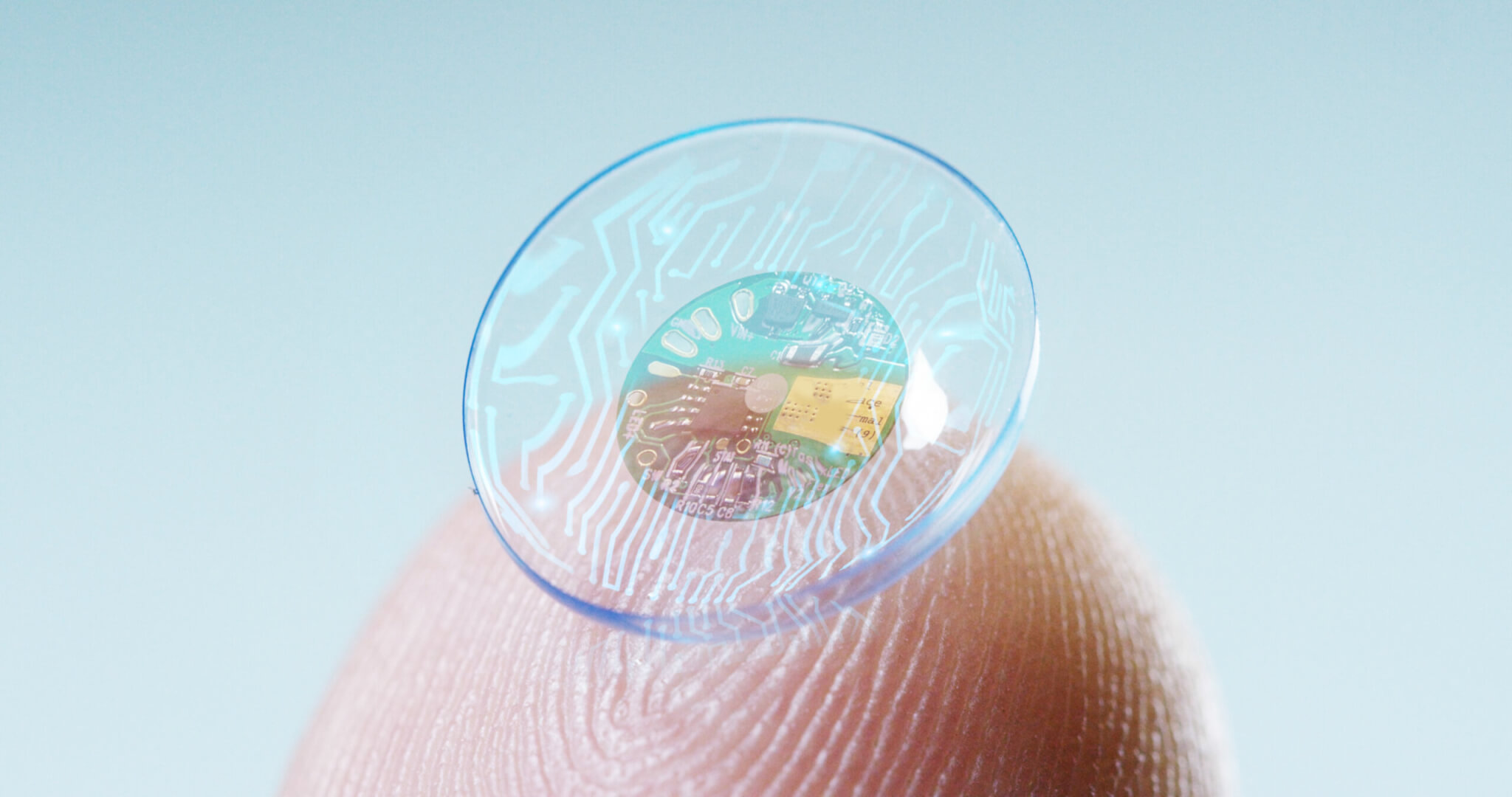The World's First
Smart Contact Lenses
A Revolutionary Leap in Wearable Tech
By Afef Yousfi

In the ever-evolving world of wearable technology, one innovation is set to redefine how we interact with digital information, healthcare, and augmented reality: smart contact lenses. Unlike traditional lenses that merely correct vision, these advanced optical devices integrate cutting-edge microelectronics to enhance human capabilities, offering real-time data monitoring, health tracking, and immersive AR experiences.
Smart contact lenses are designed with ultra-thin, flexible materials embedded with microchips, sensors, and wireless connectivity. By seamlessly blending technology with vision correction, these lenses can project digital displays directly onto the retina, measure vital health metrics, and even allow users to interact with devices through eye movements.
Leading the charge in this technological revolution are several pioneering companies and research institutions. Mojo Vision, a U.S.-based innovator, has developed Mojo Lens, which features a micro-LED display smaller than a grain of sand, enabling users to access digital information without needing a phone or glasses. Innovega has introduced iOptik lenses, designed to integrate with AR glasses for a seamless mixed-reality experience. Meanwhile, tech giants like Samsung and Google have filed patents for smart lenses equipped with cameras and sensors, envisioning a future where digital content is projected directly onto the human eye. Additionally, Sony and Johnson & Johnson are exploring applications for biometric tracking and medical advancements.

These lenses function through a combination of micro-LED displays, wireless connectivity, biometric sensors, and eye-movement control. By utilizing these technologies, smart contact lenses offer a range of transformative applications. In healthcare, they could revolutionize diabetes management by monitoring glucose levels through tear fluid analysis, help detect glaucoma through pressure-sensitive tracking, and even deliver medication directly into the eye.
Beyond medical use, smart lenses have the potential to reshape augmented and virtual reality, enabling users to receive real-time navigation, translations, and notifications right in their line of sight. Gamers, military personnel, and professionals requiring hands-free digital interaction could greatly benefit from this technology. For everyday convenience, users could experience live translations during conversations, receive instant notifications without glancing at a screen, and control smart devices with simple eye movements.
Despite their promising potential, smart contact lenses come with challenges and ethical concerns. Privacy risks are a major consideration, as built-in cameras and sensors could lead to unauthorized surveillance. Additionally, the long-term health effects of having electronics embedded in the eye remain under study. Regulatory approval is another hurdle, requiring governments to establish safety standards and legal guidelines for this emerging technology.
As battery efficiency, wireless communication, and miniaturization continue to advance, fully functional smart lenses could become mainstream within the next decade. Some experts predict that these lenses might even replace smartphones as the next major evolution in human-technology interaction. While hurdles remain, one thing is clear: the future of smart contact lenses is bright, bringing us closer to a world where digital and physical realities seamlessly merge.
Would you embrace this innovation and integrate smart contact lenses into your daily life?



